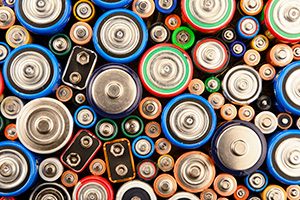 When Wi-Fi was in its infancy, I never envisioned it would become the pervasive wireless communication that connects billions of devices. Wireless connectivity has indeed freed our electronic devices from the Ethernet cable. However, these devices still require power cords or battery power. In fact, many of the billions of connected IoT devices today, especially those with low power consumption, are increasingly powered by disposable batteries. This byproduct of ubiquitous low-power wireless connectivity is evident in our local stores. It was not that long ago that an 8-pack of AA batteries at our local retail store was considered a bulk package. Today, we can buy 72-pack AA and AAA Batteries! We have unwittingly become avid consumers of batteries. In fact, we are consuming billions of batteries every year for key fobs, door locks, sensors, remotes, computer mice and keyboards, beacons, wearables, and more.
When Wi-Fi was in its infancy, I never envisioned it would become the pervasive wireless communication that connects billions of devices. Wireless connectivity has indeed freed our electronic devices from the Ethernet cable. However, these devices still require power cords or battery power. In fact, many of the billions of connected IoT devices today, especially those with low power consumption, are increasingly powered by disposable batteries. This byproduct of ubiquitous low-power wireless connectivity is evident in our local stores. It was not that long ago that an 8-pack of AA batteries at our local retail store was considered a bulk package. Today, we can buy 72-pack AA and AAA Batteries! We have unwittingly become avid consumers of batteries. In fact, we are consuming billions of batteries every year for key fobs, door locks, sensors, remotes, computer mice and keyboards, beacons, wearables, and more.
At Atmosic Technologies, our team, who spent the last decades creating ubiquitous embedded wireless connectivity, is taking a fresh look at redefining battery life for wirelessly connected devices. Our vision is to extend and, in some cases, eliminate our reliance on batteries. To extend battery life of a device, the obvious choice is to lower its power consumption. Starting from a clean slate, the Atmosic team has rebuilt every circuit block of the radio to dramatically reduce its power consumption, while maintaining full compliance to the Bluetooth 5 standard. Our team has also created system-level advancements to further extend battery life. Combining circuit-level and system-level innovations, we can reduce the power consumption to such a low level that energy harvesting is a genuinely viable power source, enabling low-duty cycle, low-power applications to have lifelong battery operation or be battery free.
When does a pipe dream become reality? I recall during the early days of Wi-Fi development, its range and data rates were considered to be too inferior to ever replace the Ethernet cable. Two decades later, Wi-Fi is my preferred internet connection both at home and the office. A new generation of teenagers has grown up never needing an Ethernet cable; many of them don’t even know what one is. For them, Wi-Fi and internet are synonymous. I believe there is a similar journey ahead with lifelong battery operation or battery free devices. As engineers continue to push the envelope of low-power design and energy harvesting, more devices and applications will benefit from significantly longer battery life and battery free operation. I am sure this technology will enable new use cases and applications that are yet to be invented.
In the meantime, it is good to remember that the cost of portable devices seldom ends with the initial purchase. Much like LED light bulbs, lower power devices that have significantly longer battery life will reduce our overall ownership cost. The next time we buy that 72-pack of AA batteries at the local store, we should ask ourselves if any of our battery-operated devices should also be upgraded to newer and lower power models.
